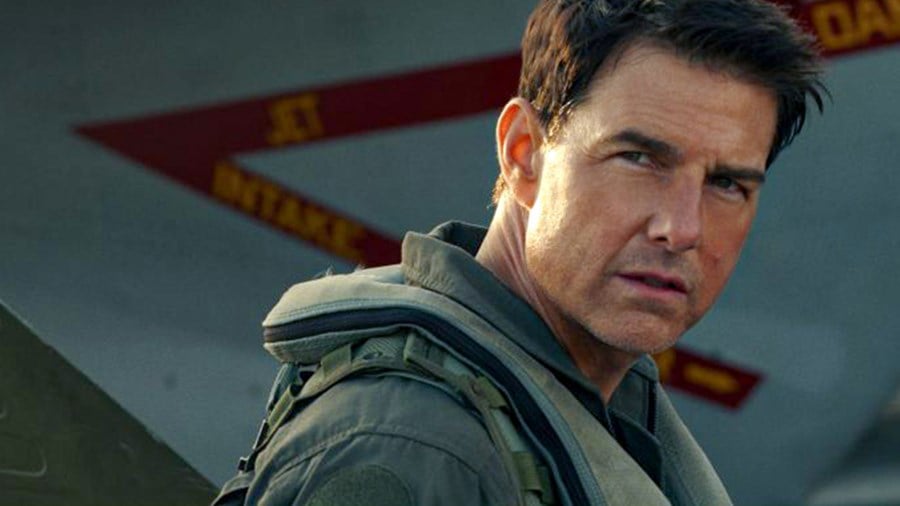One of 2022’s most popular and critically acclaimed blockbusters, Joseph Kosinski’s Top Gun: Maverick returned Tom Cruise to the role of flying ace Pete ‘Maverick’ Mitchell, while also showcasing state-of-the-art sound and vision. Al Nelson, one of the people responsible for overseeing the recording and balancing of the various sounds employed in much of the film, discusses the layers that make up its complex sonic landscape

I have been fortunate to work with Joe [Kosinski] on a few projects prior to Top Gun: Maverick. He originally came to Skywalker Sound with TRON: Legacy in 2010, but I started collaborating with him on Oblivion (2013), which was a pioneer in the use of Atmos sound in cinemas. Then we did Only the Brave (2017) together. It was around that time that we started talking about Top Gun: Maverick. I said that it would need a big sound, and a lot of it. The conversation moved quickly on to logistics: how do we get the sound early and access all these incredible naval technologies? Joe was instrumental in that, and it wasn’t long before I found myself flying out to Virginia [home of the US Navy’s Fleet Forces Command] and boarding the USS Abraham Lincoln for a week. Along with my colleague Ben Ebert, I recorded sound everywhere for the film, including F-18 and F-35 fighter jets.
Joe and I had many conversations about what we would need to create this world, which included technology like the Dark Star [the prototype plane that appears in the film’s opening scenes and which doesn’t yet exist]. We also
discussed the ways we could take sound to the next level. Joe invests heavily in research and suggested I investigate things like scramjets [supersonic combustion ramjets created to achieve high speeds]. But even with knowledge of these cutting-edge planes, we still needed to imagine the sound they would make flying at speeds that [in reality] had not yet been achieved. We’re essentially working ahead of this real-world technology, which is, of course, only something Maverick could do!

What was most important to us wasn’t so much what these sounds would be, but how they could be worked into the context of the film. Recording thousands of sounds is one thing. Finding a way to make them fit within the emotional tone of the film is something else. That’s when the fun really begins – bringing these sounds together, layering them and seeing how they play out in a particular sequence. The Dark Star, for instance, has the sound of a jet as it launches and passes over Ed Harris’ head. But then it transitions into a scramjet, before finally becoming a rocket. There was a lot of experimentation using jet and non-jet sounds to create what we ultimately ended up with.
When you’re near the [real] jets, you don’t just hear them, you feel them. How do you recreate that sensation for audiences – that raw feeling of what it’s like to be near one of these things when it launches and creates the sonic boom as it
rips across the sky? During our time recording these sounds, we were constantly figuring out the best ways to capture them. You can’t just put a microphone right on the thruster. You have to find the right angles to get above it. Or below. Just under the launch deck of an aircraft carrier is this vast cavern. From there, the jets are mere feet above our heads. We were in there, with big diaphragm microphones, recording this raw energy. So, with these recordings, and our experience of what it’s like to hear the jet, we built up a library of sounds we could combine that would work in the film. We’re not just using this noise-based element; we’re using tonal elements that can hit the various speakers in an effective way to recreate what you felt when you were there with the jet.

Top Gun: Maverick (2022)
When capturing these sounds, it’s key to remember how they will be used – as part of something bigger. Ultimately, it’s all cinema magic, just like Eddie Hamilton’s editing or Claudio Miranda’s cinematography. We use these tools to create an emotional and aural experience. The jet is only one layer. If you just used that, the audience is going to be a little underwhelmed. There are multiple speakers and multiple angles taking us inside and outside the jet. The sound needs to be articulate, working in tandem with the edit. With certain cuts, there are punches and hits and cracks. It gives sequences a bullwhip energy as we see the pilots and jets from different angles. And these sounds are employing different speakers. Certain elements just go to the subwoofer [loudspeaker], where you’re looking at 80 to 100 Hertz. And then you have the jet sound, which is much more of a mid-range frequency. As it’s more of a noise base, you use that for the energy. But then you want some elements in there – higher pitched elements – that give it all a tonality. You want the sense that the jet is speeding across the sky. So, we’re using frequency, tonality and raw energy, interchanging them depending on where we want to take the eye or the ear, or the story. So much of that comes down to Chris Burton and Mark Taylor, who did the final mix, creating the perfect balance of the visual, the sonic and the emotional.

Top Gun: Maverick (2022)
Of course, there are always challenges. Balancing the sound inside and outside the cockpit was one. It’s relatively quiet inside an F-18 – it’s a well-built machine and if you’re flying it you don’t want to hear the wind whipping by. Thanks to advances in technology, we have an extraordinary ability to clearly record actors’ voices in any environment. So, we were looking for the right balance between what the performers are saying and the mechanical sounds. It was the same with the various locations and how they react to all these sounds. It’s sonic trickery. For example, when the jets are over the water, on the mission, we intentionally made the planes very quiet – we’re inside the pilots’ heads and we can hear them breathing. When we cut outside, you can almost hear the water rippling. In that sequence, the jet is more of a tone than a rumble or rip. Whereas when Maverick is doing his canyon run, Joe wanted to hear the jet bouncing off the landscape, the rip of the rockets in dialogue with the topography, giving us a sense of just how close the plane is to the ground.

Top Gun: Maverick (2022)
Most important of all is the relationship between sound and silence. The only way you get to 11 is by starting at zero. It would be a mistake to alternate sound between 10 and 11. Audiences wouldn’t feel the extremes that the characters experience. But beyond that is the emotion. This is a film about peril, but it also deals with the past; it’s about Maverick and Goose, and Maverick’s reflection on what happened and his sending these young pilots into danger. The sound needs to create a space for us to think about this, to give us pause. By the time we reach this dangerous place, there is this incredible bang, and the impact is all the greater. It’s that moment we’re after, where you’re in the middle of the action and what we do makes you catch your breath.

